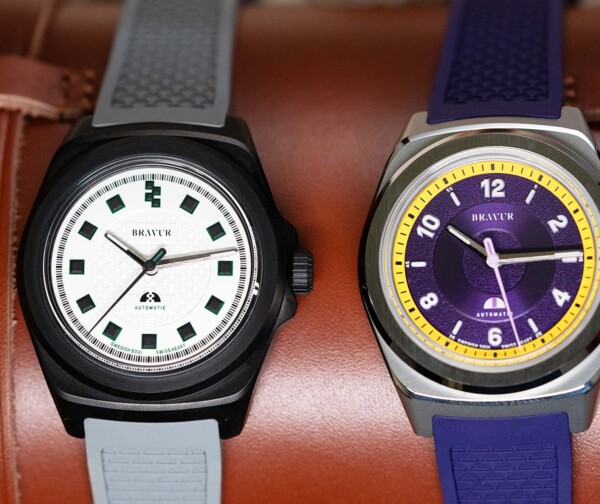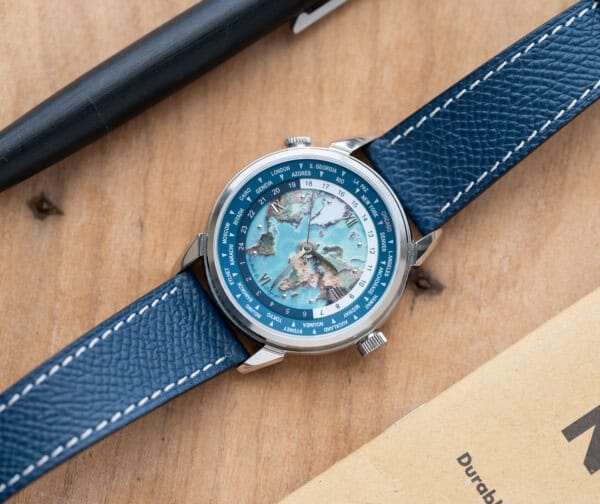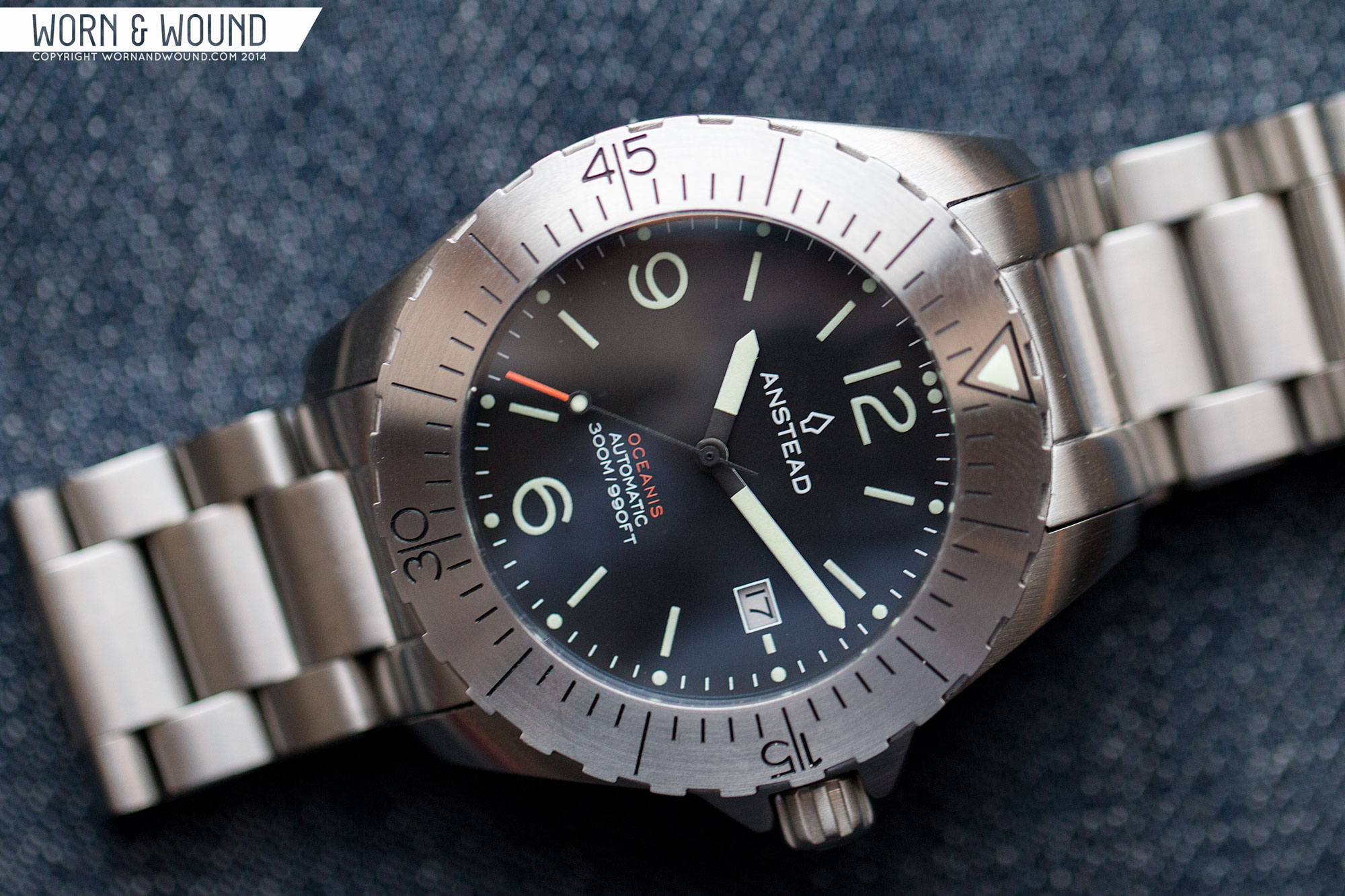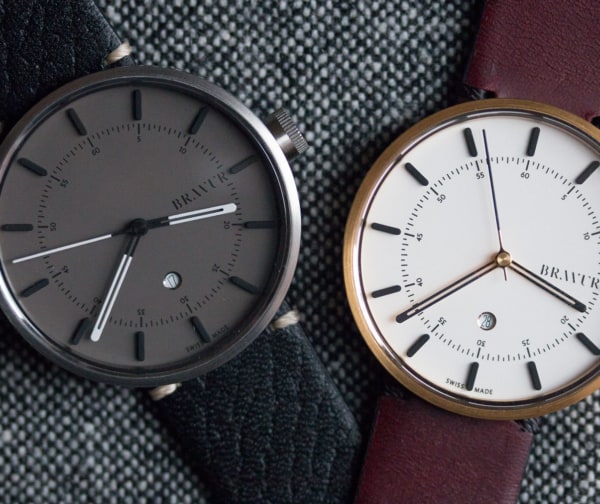When I heard last spring that Tom Anstead was going to come out with an updated version of his Kickstarter-fueled Oceanis, I was eager to get it on my wrist. I’d reviewed the first generation piece and had mentioned a few improvements I was hoping for in a next generation watch, including some quality control. I was eager to see how the boutique brand had addressed them.
The good news is, they did indeed address quality control, and a few other things too. I don’t mean this to be a head to head comparison of the Gen I and II versions, but comparisons are inevitable when discussing evolutionary models. I’ll keep them to a minimum.
Anstead Oceanis Gen II Review
 Case: 316L Steel
Case: 316L Steel
Movement: Miyota 9015
Dial: Black
Lume: SuperLuminova
Lens: Sapphire
Strap: Steel Bracelet
Water Res.: 300m
Dimensions: 44 x 49 mm
Thickness: 14.3 mm
Lug Width: 22 mm
Crown: screwdown
Warranty: 1 year, limited
Price: $649
Case
The Oceanis’ case is machined from 316L stainless steel. 316L is particularly resistant to corrosion (you thought all stainless steels were equal, didn’t you). The 44mm diameter means the watch is a bit heavy in the hand. But secured to the wrist with the accompanying bracelet (we’ll get to that), it’s quite comfortable.
Curved lugs, set at a gap of 22mm, are simple and understated. Crown guards are there to protect the crown against glancing blows.
The unidirectional bezel has shallow, squared off “serrations” for a sure grip when rotating. It’s marked in one-minute increments, and makes a revolution in 120 clicks, in case you’re using the watch for diving. We have to speak up here and say the bezel is a vast improvement over the Generation I Oceanis – easier rotation and the grip is much more comfortable than the sharp serrated teeth of the earlier model.
The screw down crown has a longer than typical screw engagement. This lends a feeling of security to the watch. One has the sense that it would be very difficult to accidentally strip the threads – something that’s happened to me several times with other watches.
The back is mercifully solid. Anstead avoided the temptation to use a display back. We like to look at movements as much as the next guy, but in a sport watch – especially one made to go to depths of up to 300 meters – a display back would be, well, silly, not to mention being another potential leak path for water penetration.
Dial and Hands
The now-familiar matte black Oceanis dial is still there. Little has changed beyond elimination of military hour markings and the day display (Anstead did retain the date). This makes for a simple, easy to read dial. Numbers at 6, 9, and 12 and stick-shaped hour markers elsewhere are SuperLumiNova, as is the coating on the hour and minute hands.
The second hand is black with a red tip and a SuperLumiNova dot for nighttime visibility. Tom Anstead purposely chose black for the hand to minimize distraction when looking at the watch. It can take a few seconds to pick up the sweeping 4mm long red tip of the hand. For that reason, we’d prefer to see a second hand totally coated with SuperLumiNova to match the rest of the watch.
The large case allows a spec’d dial viewing diameter of 31mm (we actually measured it at 32mm). The dial is protected by a domed sapphire crystal, another evolutionary improvement. As a result, the watch is much easier to read in bright light.
Movement
The engine inside the Oceanis is the 24 jewel automatic Miyota 9015. Though relatively new, the workhorse 9015 is developing a reputation for dependability (most Miyotas do). Nothing fancy here – the movement indicates date as well as hours, minutes, and hacking seconds – so you and your partner can synchronize your respective pizza and beer runs.
Bracelet and Clasp
New with the second generation watch is an oyster-style bracelet – which I like better with a sport watch. The fitted end pieces are solid – a nice touch. The links are held together with screws rather than pins, which is a much stronger and more secure fastening method. It’s a constant 22mm wide, which makes for a formidable presence on the wrist. I’m wearing it as I type and a bracelet this broad seems almost too much. A tapered bracelet might be a better choice.
The pushbutton clasp is large to fit the bracelet. There’s a ratchet mechanism for convenient micro-adjustment while the watch is on your wrist. It’s actuated with thumb and forefinger by sliders on the sides of the clasp. The mechanism allows for up to a half inch of bracelet extension – handy when wearing over a wetsuit, or on a hot sweaty day.
Some clasp edges are a bit sharp and we’d like the action to be a bit smoother, but overall, the clasp functions well. You’ll find this clasp style on more and more boutique diver and sport watches these days. It almost seems to be the new standard. In fact, Doxa features a very similar clasp on many of their current models.
It’s interesting to note, some folks get a little squeamish around a pushbutton clasp. A few have had bad experiences with them popping open in extreme situations, and prefer a fold-over security lock.
Wearability
As we briefly mentioned above, the Oceanis feels a bit on the weighty side when you pick it up. However, it’s very comfortable on the wrist. I wore it straight for a week or so, while going about my daily tasks of writing, running errands, and even doing my part of a home improvement project. The watch stuck with me through all that, with few complaints beyond the broad bracelet.
Conclusion
To be honest, the Oceanis looks like a diver, even though its inspiration is really found in the things Tom Anstead felt were missing in a Naval Officer’s watch.
At 44mm across, the watch is well-suited for larger wrists (me). At 14mm thick, it’s not going to hide demurely under a shirt cuff. This is a watch for a man of action, not a desk jockey.
Its white hands are extremely readable – and SuperLumiNova helps in low-light conditions. With the count-up minute bezel exchanged for a bi-directional compass version, I can easily see this watch being an outdoorsman’s tool. It’s certainly that tough.
Priced at $649, the new Anstead Oceanis is a good, solid watch and a great overall improvement over the first generation piece, both in performance and quality. It rests firmly in the tool genre, quite suitable to the challenging conditions found in a rugged on-the-job, sport, or general outdoor setting.









 Featured Videos
Featured Videos

















I actually prefer the looks of the first gen, especially the sharper looking bezel, bolder bezel engravings, and the shape of the lugs. I would prefer the date-only indication, and the 22mm strap size versus the original 24mm, though.
Tired of all these indie-newbie -miyotish9015 watch brands… So boring.
Please, take a look at new Orient Star GMT Power Reserve – they’ll cost same as Anstead, but have all best Orient features: inhouse calibre with gmt & power reserve, perfect size, applied indexes
Fantastic watch!! Where can I get one?
That is an ugly watch.
Boring looking watch & overpriced.
Looks great. So far I’ve been really impressed with the update from a design perspective. Maybe a little on the big side, but I don’t think that’ll hinder most guys looking for a watch in this category.
As someone who owns the first generation Oceanis, I really like the improvements in this model. I will always prefer the rigid look of the saw-tooth bezel, but the other changes are nice (especially the bracelet). Keeps me intrigued with what will come next from Anstead.
46-48mm with a thinner bezel would have won me over.